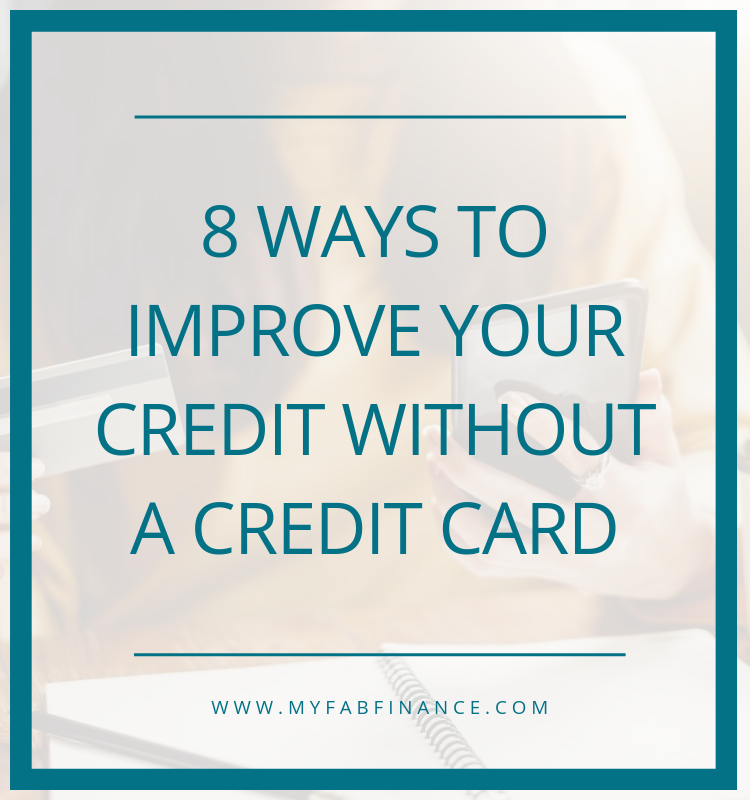When searching for ways to improve your credit, the most common advice we receive is to open a credit card. We’ve been told that in order to build a positive credit history, we need to open a credit card (secured or unsecured), make a small purchase once a month, stay under 30% of our credit limit and pay off the balance every month.
Although this can be a great tool to build or rebuild your credit, this is not the only solution. There are other ways to improve your credit. Let’s first understand why a credit may not be an option to build or rebuild credit.
5 Reasons Why A Credit Card May Not Be An Option:
- Credit card application denied
- Paid off credit card debt and not interested in taking on more credit card debt
- Never had a credit card and not interested in starting now
- Lack of credit card discipline
- Tempted to max out credit cards
It’s great to understand your options when improving your credit so that you can choose the best options for you. If you’re someone who either has no desire to use a credit card or attempted to get a credit card but was denied, consider these alternatives.
Ways To Improve Your Credit Without a Credit Card
- Credit Report Errors: The first step to improving your credit is checking for errors. Are any fraudulent items reported? Are your debts reported accurately? Sometimes disputing errors can positively impact your score, especially if an item is reported negatively.
- Monthly Expenses: Think about the expenses you already have. What are you already paying for each month? Rent, water, gas, electricity, phone, and the internet. Contact each company and ask if they will report your payments to the credit bureaus every month. This will require you to pay your expenses on time every month so that your credit reports will show a history of on time payments.
- Installment Loans: Auto loans, personal loans, debt consolidation loans, mortgage, and student loans are all examples of installment loans. You borrow a specific amount and repay the amount over a period of time. This shows lenders that you’re a reliable borrower.
- Lending Circles: Typically 6-12 people come together to lend money to each other. Once everyone completes an application and is approved, each person pays $50 – $200 monthly for 12 months. One person receives the loan amount, which can range from $300 – $2,400, every month until everyone has a turn. After 12 months everyone will have a positive payment history on all three major credit bureaus.
- Self Lender: You build credit history and savings at the same time. You pay at least $25 per month for 12 – 24 months. These payments are reported to the credit bureaus every month. At the end of the payment term, you get the money back less the interest. No credit history is required to get approved.
- Credit Unions: Apply for a credit builder loan. It’s similar to Self Lender. Your monthly payments are put into a savings account as you build a positive credit history through the monthly payments. Once you reach the end of the loan term, you’ll receive the money back.
- Experian Boost: Utility and phone payments are used to improve your score. Boost will only count positive payment history. No need to worry if you have missed payments in the past. There are no guarantees your score will increase, but it’s worth a try.
- Pay Off Debt & Increase Income: The amount of debt you have compared to how much income you earn is used to help lenders determine your ability to repay debt. The lower your debt to income ratio the better. The higher the ratio, the more a lender will determine that you may not be able to repay debt and not in a position to take on any new debt. Review your credit reports to determine if you need to pay down debt, increase income or a combination of both.
So let’s take the next steps towards improving our credit so we can be in the best financial position when we’re ready to apply for financing. As you take advantage of these ways to improve your credit without a credit card, remember that patience is key. You may see your credit improve quickly. You may realize that it will take longer to improve. Either way, remain calm and patient. Continue to put in the work step by step, day by day.
Written by our contributor, Cleo Childress.

You said: